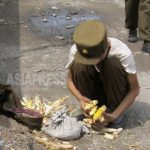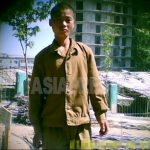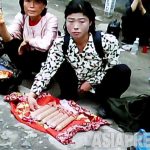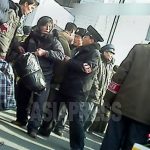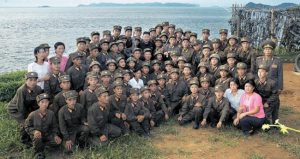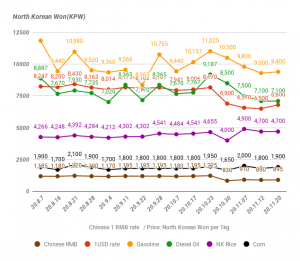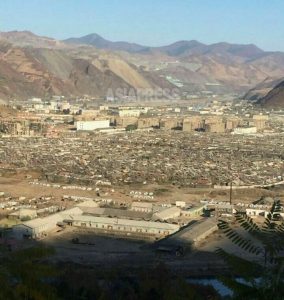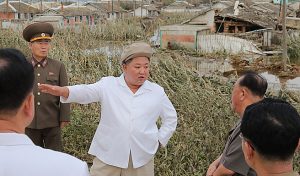2016/Oct/26
In the mid 90s, a number of “kotchebi”, which means “flowering swallow”, roamed around cities in throughout North Korea. During this chaotic period, known colloquially as the “arduous march”, children became kotchebi because their parents had died or had abandoned them due to their inability to take care of them because of the collapse of the distribution system.
The number of kotchebi has gradually decreased over the last 20 years because, instead of relying on the dysfunctional food rationing system, people have learned to make their livings out of small businesses within the jamadang markets.
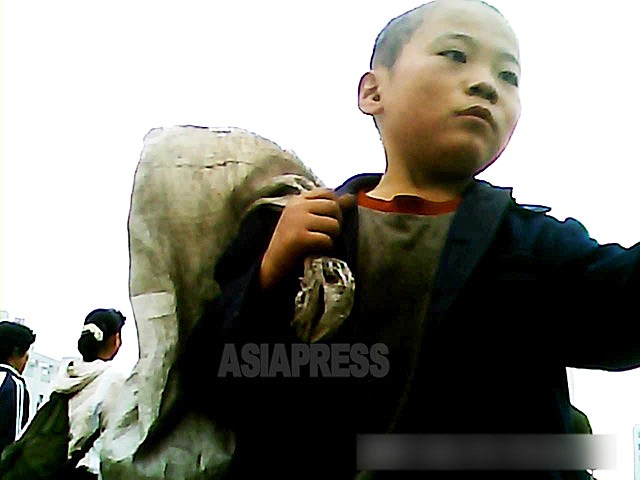
A boy roaming around a city with a big cloth bag. The photographer said that, “He may have escaped from a detention center for orphans since his hair is entirely shaved off.” September 2013, in Pyongsong City, South Pyongan Province. Taken by ASIAPRESS.
All of ASIAPRESS’s reporting partners say that the number of kotchebi in large cities has greatly decreased under the Kim Jong-un regime.
A reporting partner in Pyongyang mentioned that, “the government ordered the building of orphanages and for officials to clear all the kotchebi from the streets, and to shelter all of them there [the orphanages]. Rumor has it this was all because Comrade Kim Jong-un was angered at South Korean and Japanese TV programs who repeatedly broadcasted stories on the kotchebi.”
Related article: [Video Report] The hidden homeless of Pyongyang
Orphanages have been disguised and renamed to official kindergartens, primary schools, and a junior high schools. Many of them have been built all over North Korea. The state-owned media has often featured them as, “a fruit of love given by General Kim Jong-un.”
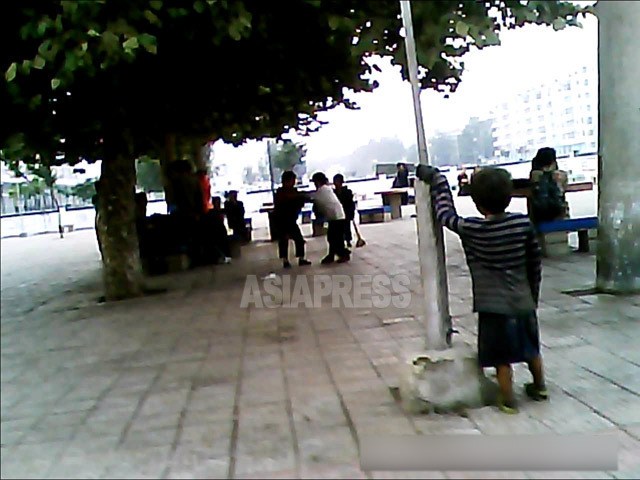
A boy wearing an oversized jacket meant for an adult in a city central. September 2013, in Pyongsong City, South Pyongan Province. Taken by ASIAPRESS.
Nest page: <Photo> A boy has been crying hard. September 2013, in Pyongsong City, South Pyongan Province. Taken by ASIAPRESS

